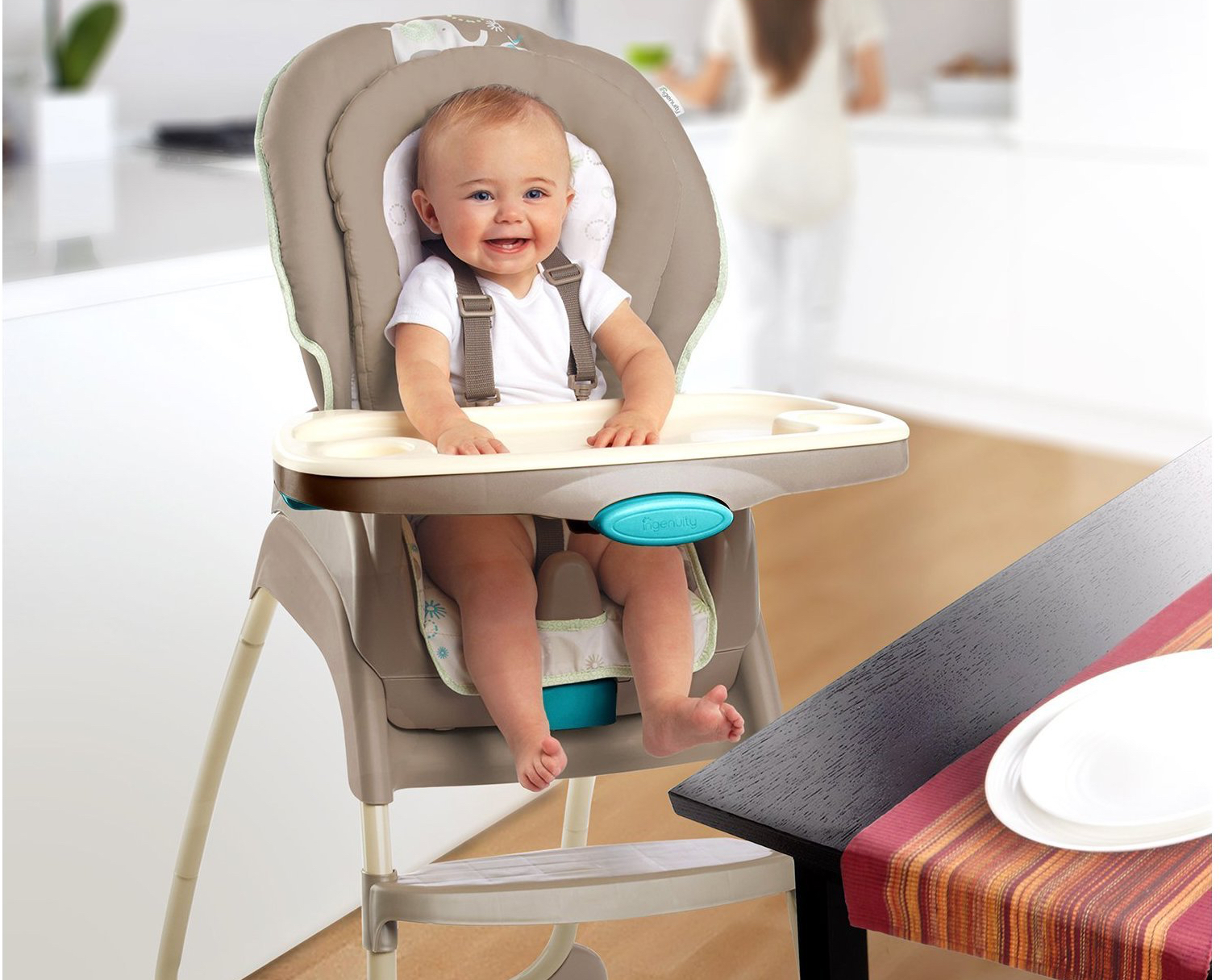Developmental Milestones and Readiness

Introducing your little one to the high chair is a significant step in their journey towards independence and joining the family at mealtimes. As with all developmental milestones, it’s crucial to allow your baby to lead the way and ensure they’re physically and mentally prepared for this new experience.
Signs of Readiness
Understanding the signs of readiness for a high chair is key to making this transition smooth and enjoyable for both you and your baby. When a baby demonstrates certain physical and cognitive abilities, it signifies their readiness to sit upright and engage in mealtimes.
- Strong Head Control: A baby with good head control can hold their head steady without wobbling. This is essential for maintaining a safe and stable position in the high chair.
- Sitting Up Independently: The ability to sit up independently, even for a short period, is a crucial indicator of readiness. It shows that their core muscles are strong enough to support their body upright.
- Interest in Food: Observe your baby’s fascination with food and mealtimes. Do they reach out for your food or show excitement when they see you eating? This interest signifies their readiness to participate in mealtime rituals.
Safety Considerations: When To Put Baby In High Chair

As parents, we want to ensure our little ones are safe and secure, especially when they start exploring the world around them. The high chair, a vital tool for feeding and bonding with your baby, should be a safe haven, not a source of worry. Let’s delve into the essential safety considerations for choosing and using a high chair.
Choosing a Safe High Chair
Selecting a high chair with robust safety features is crucial. Imagine your baby happily munching on their meal, their tiny fingers exploring the world around them. This is the moment we want to ensure their safety is paramount.
- Secure Harness: A five-point harness is a must-have. It should be adjustable to fit your baby snugly and prevent them from slipping or falling out. Think of it as a gentle embrace, keeping them secure and comfortable.
- Wide Base and Stability: A wide base provides stability, ensuring the high chair won’t tip over. Imagine a sturdy tree, rooted firmly in the ground, providing a stable base. The high chair should be equally sturdy, providing a secure platform for your baby.
- Easy-to-Clean Materials: Spills and messes are inevitable, so choosing a high chair with easy-to-clean materials is a practical choice. Think of it as a blessing, making mealtimes less stressful and keeping your high chair looking pristine.
Safety Checklist for High Chairs, When to put baby in high chair
Before bringing a high chair home, take a moment to review this checklist:
- Secure Harness: Does it have a five-point harness that adjusts easily?
- Wide Base: Does the high chair have a wide, stable base?
- Seat Depth and Height: Is the seat deep enough to support your baby and prevent them from slipping out? Is the height adjustable for comfortable feeding?
- Tray: Is the tray removable and easy to clean? Does it have a secure latch to prevent it from falling?
- Materials: Are the materials non-toxic, durable, and easy to clean?
- Assembly: Is the high chair easy to assemble and disassemble?
Types of High Chairs and their Safety Features
High chairs come in various types, each with its own set of safety features and pros and cons.
| Type | Safety Features | Pros | Cons |
|---|---|---|---|
| Traditional High Chair | Secure harness, wide base, adjustable height | Sturdy, affordable, long-lasting | Bulky, not portable |
| Foldable High Chair | Secure harness, wide base, adjustable height, compact design | Portable, easy to store, space-saving | May be less sturdy than traditional high chairs |
| Booster Seat | Secure harness, adjustable height, easy to attach to chairs | Portable, versatile, can be used for older children | May not be as stable as traditional high chairs, requires a sturdy chair |
Transitioning to Solid Foods

This journey of introducing solid foods to your little one is a beautiful and sacred process, mirroring the growth and development of your child’s body and spirit. It’s a time to nurture their physical needs while also nurturing their connection with the world around them, one delicious bite at a time.
Gradual Introduction of Solid Foods
Starting solids is a gradual process, and like a tender plant, it requires patience and care. We must remember that your baby’s digestive system is still developing, and it’s essential to introduce new foods slowly and thoughtfully. Think of this as a sacred dance, a delicate balance between nurturing your child’s growing body and respecting its pace.
“Start with single-ingredient purees and progress to more textured foods.”
The foundation of this journey is starting with single-ingredient purees. These purees allow you to observe your baby’s reactions to each food, ensuring they don’t develop any allergies or intolerances. As your little one grows, you can gradually introduce more complex flavors and textures, like mashed fruits and vegetables, followed by soft finger foods. Think of this as a spiritual journey, each step leading to a deeper understanding of your child’s unique needs and preferences.
Sample Meal Plan
Here’s a sample meal plan for a baby starting solids, providing a balanced and nourishing introduction to the world of flavors:
Breakfast
* 6 months: 1-2 tablespoons of pureed fruit (apple, pear, banana)
* 7 months: 1-2 tablespoons of pureed vegetable (sweet potato, squash, carrots)
* 8 months: 1-2 tablespoons of oatmeal or baby cereal
Lunch
* 6 months: 1-2 tablespoons of pureed vegetables or fruits
* 7 months: 1-2 tablespoons of mashed vegetables (peas, green beans)
* 8 months: 1-2 tablespoons of mashed meat (chicken, turkey)
Dinner
* 6 months: 1-2 tablespoons of pureed vegetables or fruits
* 7 months: 1-2 tablespoons of mashed vegetables (broccoli, cauliflower)
* 8 months: 1-2 tablespoons of mashed fish (salmon, cod)
Snacks
* 6 months: 1-2 tablespoons of pureed fruit or vegetables
* 7 months: 1-2 tablespoons of soft finger foods (avocado, banana)
* 8 months: 1-2 tablespoons of yogurt or cheese
Remember, these are just examples, and you should consult with your pediatrician for personalized recommendations based on your baby’s individual needs and preferences.
Recommended Age Ranges for Introducing Food Groups
- 6 months: Iron-fortified cereal, pureed fruits and vegetables (apple, pear, banana, sweet potato, squash, carrots).
- 7 months: Mashed vegetables (peas, green beans, broccoli, cauliflower), mashed meat (chicken, turkey), yogurt, cheese.
- 8 months: Soft finger foods (avocado, banana, cooked pasta, soft bread), mashed fish (salmon, cod), eggs (cooked well).
- 9 months: Cooked beans (mashed or pureed), tofu, cooked lentils.
- 10-12 months: Introduce a variety of foods from all food groups, including fruits, vegetables, grains, protein, and dairy.
It’s important to note that these are general guidelines, and your pediatrician can provide more specific recommendations based on your baby’s individual development. Remember, introducing new foods is a sacred journey of discovery, and each bite is a step toward building a healthy and happy relationship with food.
When to put baby in high chair – Most pediatricians recommend introducing your baby to a high chair around 6 months old, when they can sit up with support and have good head control. This is also when they start to show interest in the food you’re eating! A great option for on-the-go meals is the Regalo Portable High Chair , which is compact and easy to travel with.
This way, you can continue to introduce your little one to new flavors and textures, even when you’re out and about.
While there’s no hard and fast rule for when to introduce a high chair, most babies are ready around six months when they can sit up with good head control. If you’re a Boon high chair owner and need to replace a worn-out part, you can find a wide variety of boon high chair replacement parts to keep your chair in tip-top shape.
This way, your little one can enjoy mealtimes in their high chair for longer, making those first family dinners a breeze.
